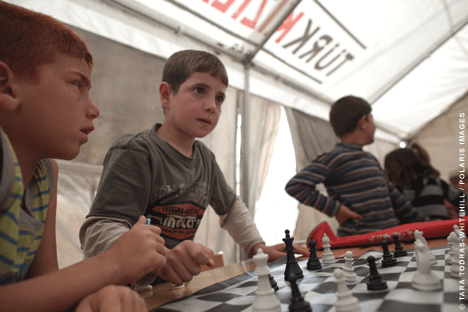Among Syrian refugees in Southern Turkey.

By Tara Todras-Whitehill | Last March, one year after the outbreak of civil war in Syria, I traveled to the border between Syria and Turkey to document the rising tide of refugees fleeing the violence. Turkish President Abdullah Gul had begun preparing for a “worst-case scenario” the previous spring, when 300 Syrians had sought safety on Turkish soil. By the time I arrived that number had swelled to 10,000, many of whom were living under the white tents of the International Red Cross and Red Crescent Movement.


The first thing that struck me was how well maintained the camps were. The roads were paved, and a school had been set up to serve the large numbers of children. Like the handsome playground equipment, it looked quite respectable given the challenging circumstances. Yet a shortage of Arabic-speaking teachers was a problem, since few kids understood Turkish. Many refugees who had the money had chosen to move to the nearby city of Antakya, where some of them had set up another school staffed by Syrian schoolteachers. No less than families in every other part of the world, the displaced Syrians I met were trying hard to protect their children’s well-being.
The week after my visit, the refugee population in Turkey reached 23,000, as a new wave of citizens fled in the face of a Syrian Army offensive. One year later, the United Nations High Commissioner on Refugees estimates that 180,000 displaced Syrians are now living in Turkey. I hope to return to the border area to see how things have changed, and how these men, women, and children are faring.



Tara Todras-Whitehill C’00 EAS’00 is a photojournalist currently based in the Middle East.




